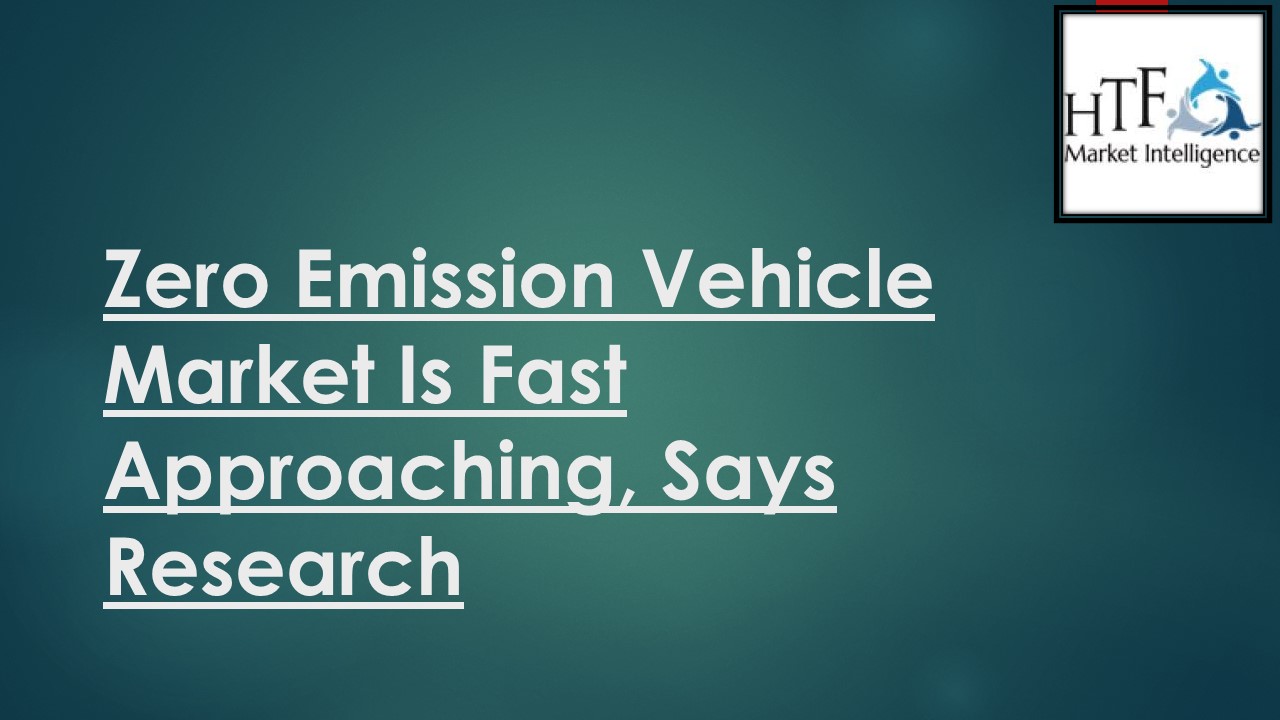Zero Emission Vehicle - PowerPoint PPT Presentation
Title: Zero Emission Vehicle
1
Zero Emission Vehicle Market Is Fast
Approaching, Says Research
2
- A zero-emission vehicle (ZEV) refers to a type of
vehicle that emits no tailpipe pollutants during
operation, thus producing zero emissions. These
vehicles are designed to reduce or eliminate the
negative environmental impacts associated with
traditional internal combustion engine (ICE)
vehicles that rely on fossil fuels. - There are several types of zero-emission
vehicles - Battery Electric Vehicles (BEVs) These vehicles
are powered solely by electricity stored in
rechargeable batteries. BEVs do not have an
internal combustion engine and produce zero
tailpipe emissions. They are typically charged by
plugging them into an electrical outlet or
charging station. - Hydrogen Fuel Cell Vehicles (FCVs) FCVs use a
fuel cell stack that combines hydrogen with
oxygen from the air to produce electricity, which
powers an electric motor. The only byproduct of
this process is water vapor, making FCVs
emission-free.
3
Plug-in Hybrid Electric Vehicles (PHEVs) PHEVs
combine an internal combustion engine with an
electric motor and a rechargeable battery. They
can be charged by plugging into an electrical
outlet, allowing them to operate in electric mode
for a limited distance. When the battery is
depleted, the vehicle switches to hybrid mode,
using both electricity and gasoline. Zero-emission
vehicles offer several benefits,
including Environmental Impact ZEVs
significantly reduce greenhouse gas emissions and
air pollution, helping to combat climate change
and improve air quality. Energy Efficiency
Electric motors are more efficient than internal
combustion engines, meaning ZEVs can convert a
higher percentage of the energy stored in their
fuel source into motion. Renewable Energy
Integration ZEVs can take advantage of renewable
energy sources, such as solar or wind power, for
charging, reducing reliance on fossil fuels.
4
- Reduced Operating Costs ZEVs have lower
operating costs compared to conventional vehicles
due to lower fuel and maintenance expenses.
Electricity is generally cheaper than gasoline or
diesel, and electric motors have fewer moving
parts, requiring less maintenance. - Technological Advancements The development and
adoption of ZEVs drive innovation in battery
technology, charging infrastructure, and other
related industries, promoting further
advancements and cost reductions. - Governments and organizations worldwide are
promoting ZEVs through incentives, subsidies, and
infrastructure development to accelerate their
adoption and help transition to a cleaner and
more sustainable transportation system.
5
Zero Emission Vehicle Market By Regions
- If opting for the Global version of Zero Emission
Vehicle Market then the below country analysis
would be included North America (the USA,
Canada, and Mexico) Europe (Germany, France, the
United Kingdom, Netherlands, Italy, Nordic
Nations, Spain, Switzerland, and the Rest of
Europe) Asia-Pacific (China, Japan, Australia,
New Zealand, South Korea, India, Southeast Asia,
and the Rest of APAC) South America (Brazil,
Argentina, Chile, Colombia, the Rest of the
countries, etc.) The Middle East and Africa
(Saudi Arabia, United Arab Emirates, Israel,
Egypt, Turkey, Nigeria, South Africa, Rest of
MEA)
6
- Zero Emission Vehicle Market Growth 2023-2029 is
the latest research study released by HTF MI
evaluating the market risk side analysis,
highlighting opportunities, and leveraging with
strategic and tactical decision-making support, - https//www.htfmarketintelligence.com/report/globa
l-zero-emission-vehicle-market
7
- Contact Us Craig Francis (PR Marketing
Manager)HTF Market Intelligence Consulting
Private LimitedPhone 1 434 322
0091sales_at_htfmarketintelligence.comConnect with
us at LinkedIn Facebook Twitter































